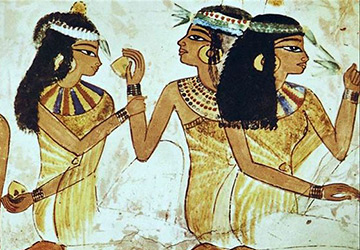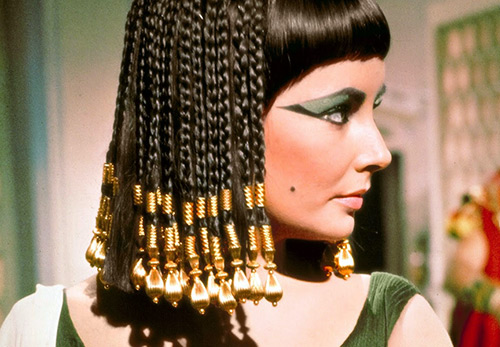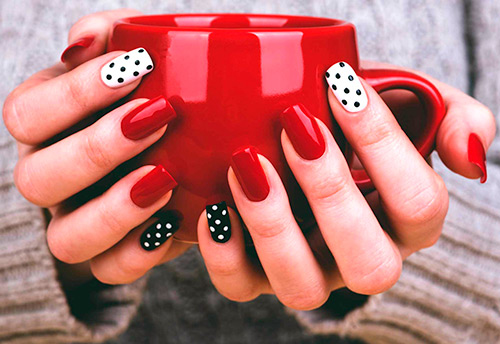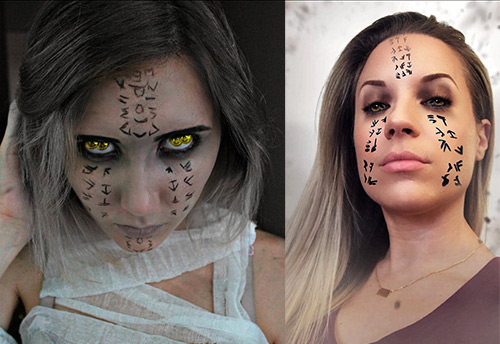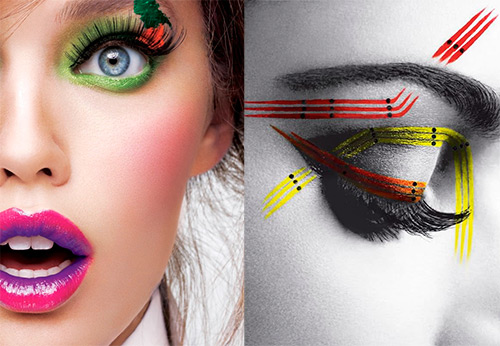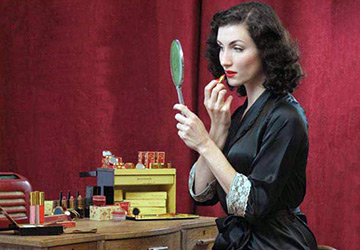Fashion history
Fashion and history of the costume of Ancient Egypt
The civilization of Ancient Egypt existed for almost 3,000 years. The history of Ancient Egypt is fascinating and mysterious. What was done in Ancient Egypt is unique.
These are pyramids that are not afraid of time, majestic sculptures and original decorations. Ancient Egyptians they were good doctors, excellent builders, great artists. The clothes of the ancient Egyptians were no less interesting.
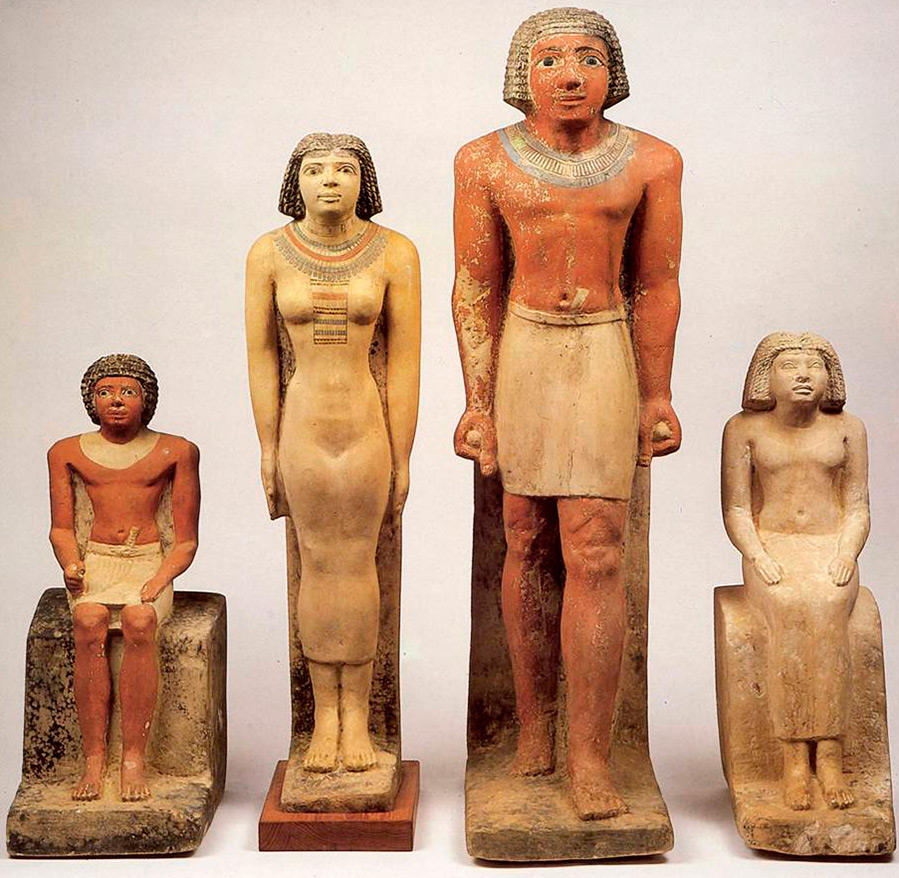
The entire history of Ancient Egypt is divided into three periods - the Ancient Kingdom (approximately 3000-2400 BC, it was at this time that the famous Egyptian pyramids were built, including the highest of them - the pyramid of Cheops), the Middle Kingdom (approximately 2400-1600 BC) and the New Kingdom (1600-1100 BC).
It is to the New Kingdom that the reign of the only female pharaoh Hatshepsut belongs, and it was at this time that Queen Nefertiti lived, who, in the opinion of her contemporaries, had incredible beauty. Another period in the history of Ancient Egypt is the era of the Ptolemies, which lasted until 30 AD. NS. It was in this year that Egypt was finally conquered by Rome and turned into one of the provinces of the Roman Empire. Cleopatra became the last queen of Ancient Egypt.
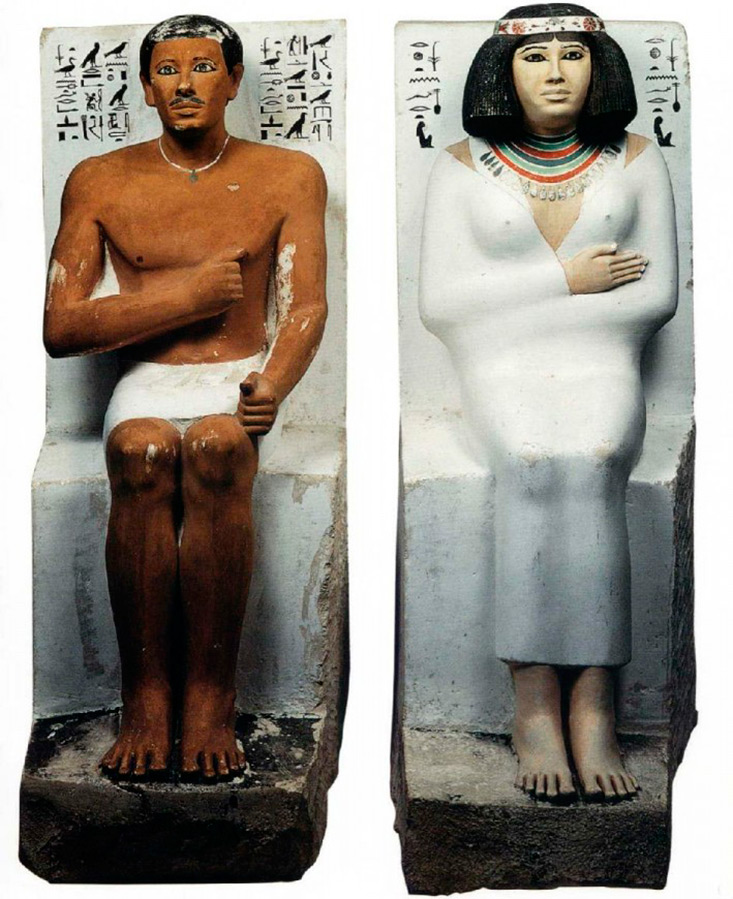
Sculpture of Rahotep (Pharaoh's heir) and his wife Nofret
Rahotep is dressed in shenti, Nofret in kalaziris
Clothing traditional for the Egyptians throughout their history appears during the period of the Old Kingdom. And like everything that appeared in antiquity (for example, the rite of mummification, the cult of the underworld, worship of the pharaohs, who were considered the descendants of the sun god Ra), will almost invariably exist throughout the entire existence of Ancient Egypt itself.
The Egyptians did not like changes, they remained faithful to traditions for all 3000 years of their history. And only in the New Kingdom there were attempts to combat these traditions, for example, the reform of Pharaoh Akhenaten (wife of Nefertiti), who tried to establish the cult of a single god.
After his death, the Egyptians returned to their traditions again. The same thing happened with clothing - only in the New Kingdom in the clothing of the Egyptians, unchanged for millennia, new elements will appear.
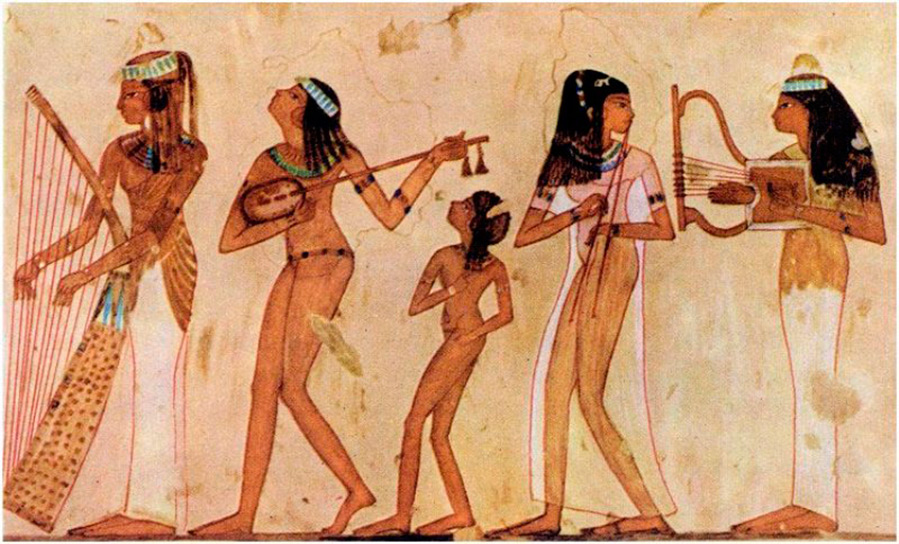
Ancient Egyptian murals
The climate of Ancient Egypt was quite hot. The Egyptians knew neither cold winters nor rainy seasons. And their clothes were very simple. Men of all classes - from Pharaoh to slaves - wore a shenti apron, very similar to the loincloth of primitive people. Schenti could be made either from leather or from flax.
This clothing differed only in its length. Longer aprons were worn by the pharaohs, while the shenti of the slaves was a strip of very narrow fabric.
The women wore clothes called kalaziris. It was a long, tight-fitting shirt with straps. At the same time, during the time of the Old Kingdom, the chest remained open. To this day, among the African tribes, one can see tribes whose clothes, both for men and women, cover only the lower half of the body.
The inhabitants of Ancient Egypt wore sandals on their feet. These were shoes made from bark, papyrus and palm fibers. The sandals were not very durable, and therefore they were most often worn in the hands, wearing only in the temple or during ceremonies.
The Egyptians also had a curious custom associated with shoes. On the soles of their sandals, they could paint a portrait of their enemy and thus trample it while walking.
Kalaziris (kalasiris) - a piece of matter,
which wraps around the body,
length from ankle to chest.
The basis of the ancient Egyptian costume.
In the Middle Kingdom, the pharaohs begin to wear more ornate clothes. So, the pharaoh wore two shenti.The first is a plain plain fabric. The second schenti apron was made of gilded leather and was tied with a wide belt decorated with colored enamel or painted designs.
Further, the pharaoh threw a small cloak of light fabric over his shoulders. An adornment in the form of a necklace - ukkh - was worn around the neck. Such a necklace was worn not only by the pharaohs, but also by the queens. It was made from large smalt or beads covered with colored paste.
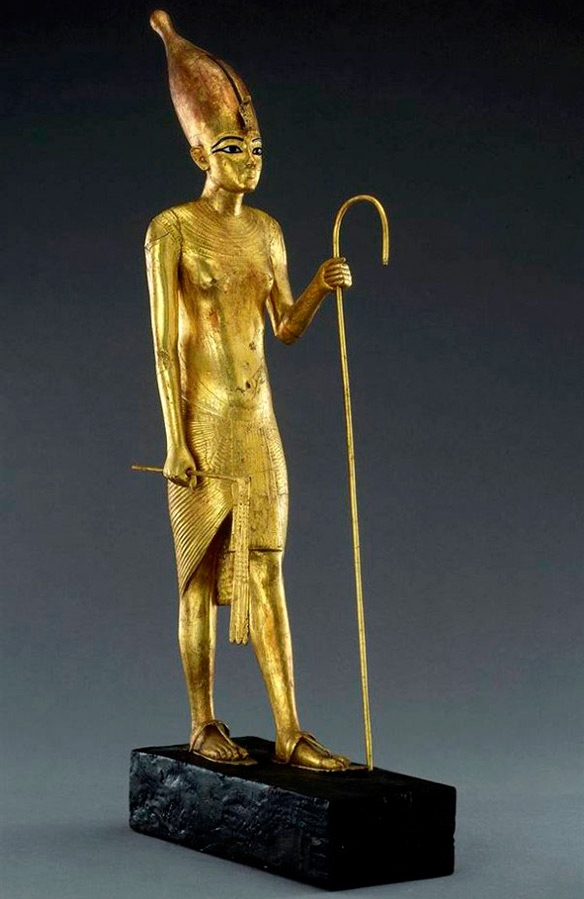
A figurine of Pharaoh Tutankhamun in a high headdress of Upper Egypt, on the figurine you can see the shenti and uck
Also, pharaohs and queens wore bracelets, necklaces, rings, tiaras and earrings. Bracelets were made from gold plates, cords or beads. Women could wear bracelets not only on their hands, but also on their legs. If for pharaohs, queens and officials, as well as their wives, jewelry was made of gold and precious stones, then ordinary Egyptians most often wore jewelry made of bronze and ceramics.
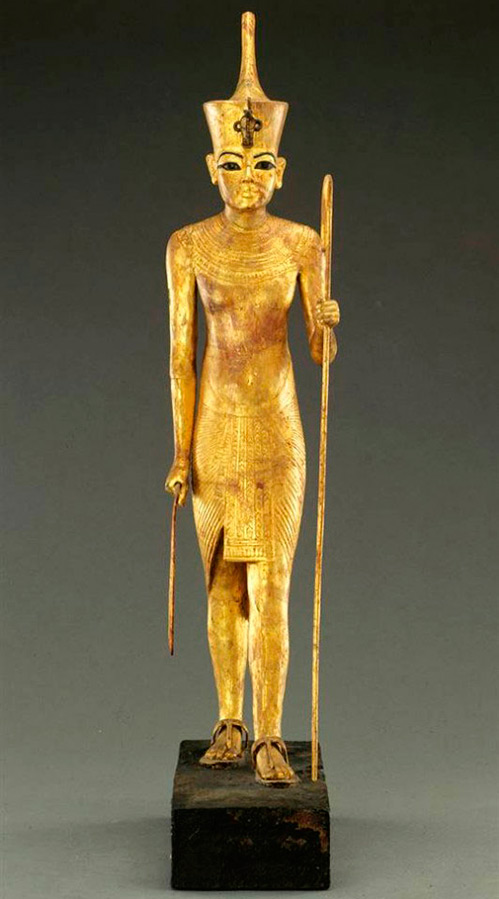
Statuette of Tutankhamun wearing the crown of Lower Egypt,
clothing - shenti and uskh
But this was not the end of the Pharaoh's toilet. Dressed in two shenti, a cape and wearing jewelry, the pharaoh had to put a wig on his head, and attach a small thin beard to his face, into which a gilded urey snake could very often be woven.
The snake symbol was considered a symbol of the power of the pharaoh. Like an artificial beard, it indicated that the pharaoh owned the entire land of Ancient Egypt. The only female pharaoh Hatshepsut in the history of Ancient Egypt also wore an artificial beard - a symbol of power.
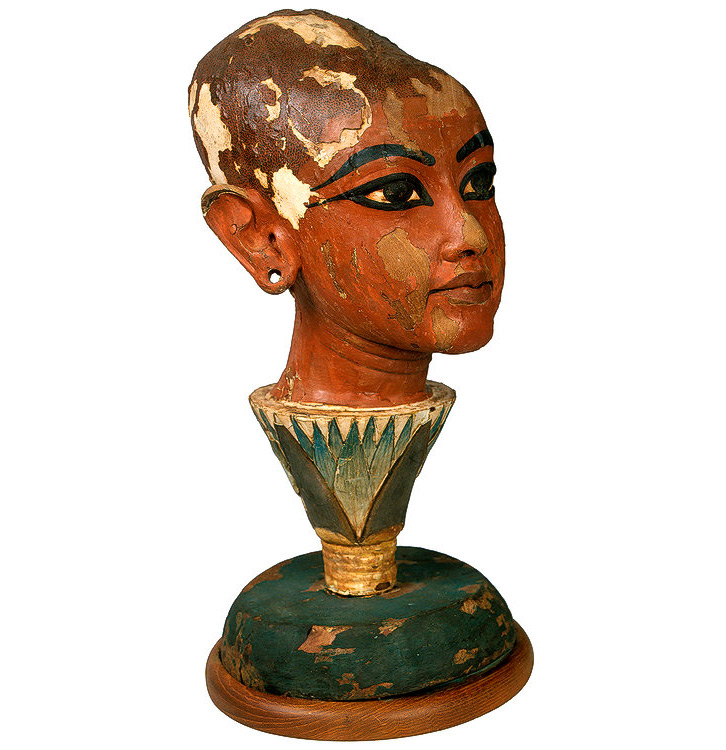
Sculpture head of Tutankhamun
As for wigs, all Egyptians wore hairstyles on wigs, with the exception of slaves and children. Wigs were worn over shaved heads. So both Nefertiti and Cleopatra had shaved heads.
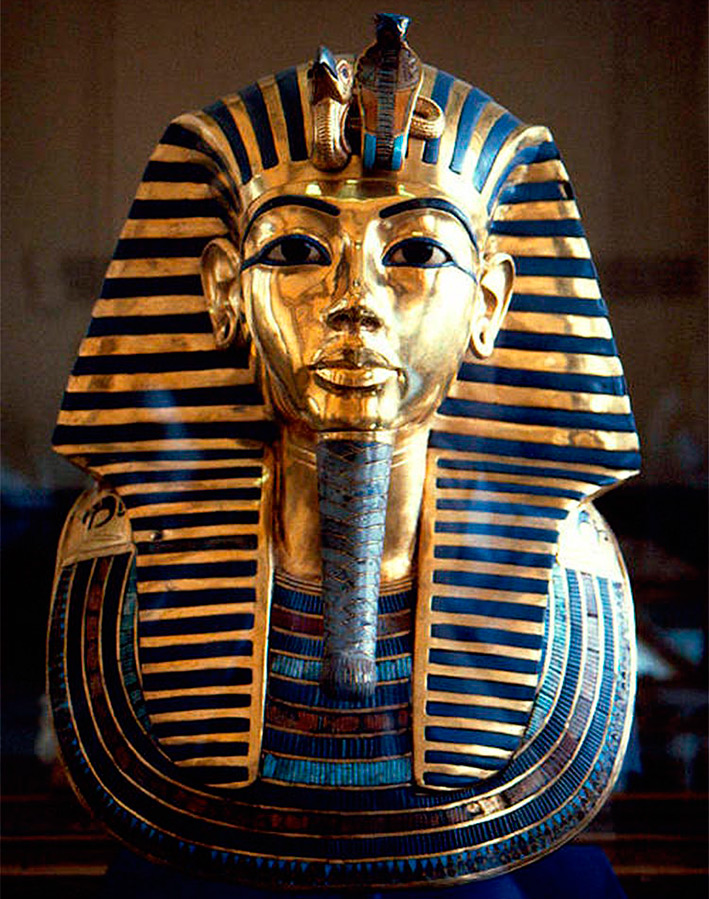
Pharaoh Tutankhamun's death mask
It features a striped claft scarf
Well, the final touch to the pharaoh's costume is the crown. Crown Ancient egypt it was called millet and it consisted of two parts (previously independent crowns of Upper and Lower Egypt), symbolizing Upper and Lower Egypt, respectively - two parts from which the ancient Egyptian state arose. Pharaohs could also wear a striped klaft scarf as a headdress.
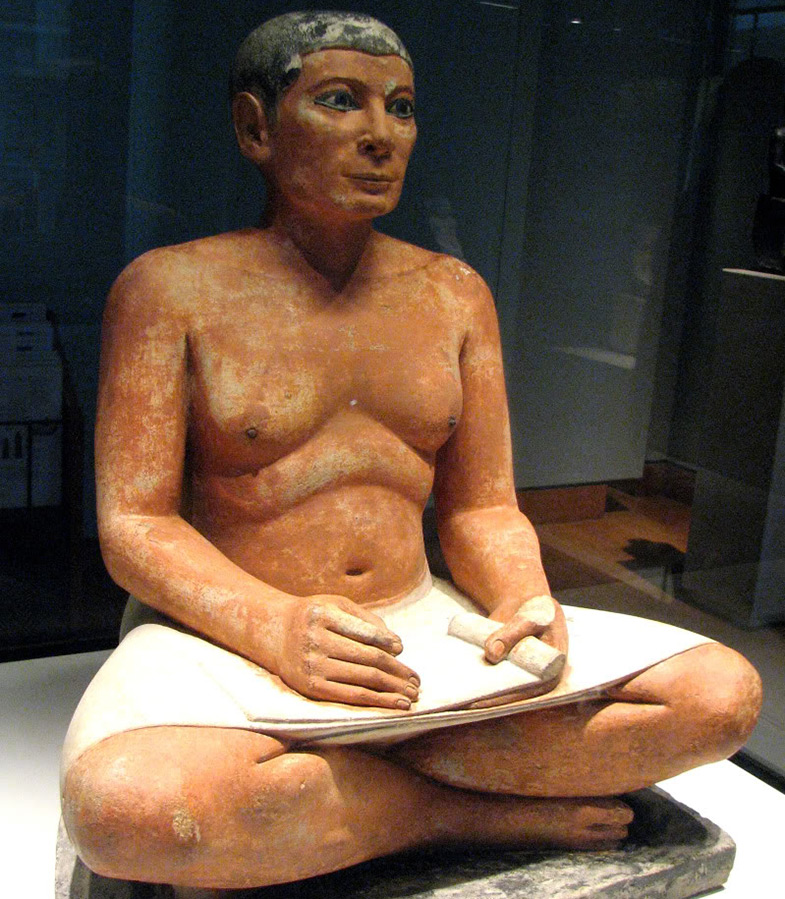
Scribe Kaya Statue
Clothing - shenti
The Queen's costume also appears in the Middle Kingdom. If the snake was considered the symbol of the pharaoh, then the falcon is the symbol of the queen. The queens of ancient Egypt wore crowns in the form of a falcon bird. The only exception was Nefertiti, who wore a cylindrical crown.
The main clothing of the queen was kalaziris - long and pleated of transparent fabric, over which a light cloak embroidered with gold was worn, as well as a necklace-ukkh. In addition to images of a falcon bird, the queen's jewelry also featured images of lilies, the queen's scepter was in the shape of a lily, and a scarab beetle, a symbol of fertility.
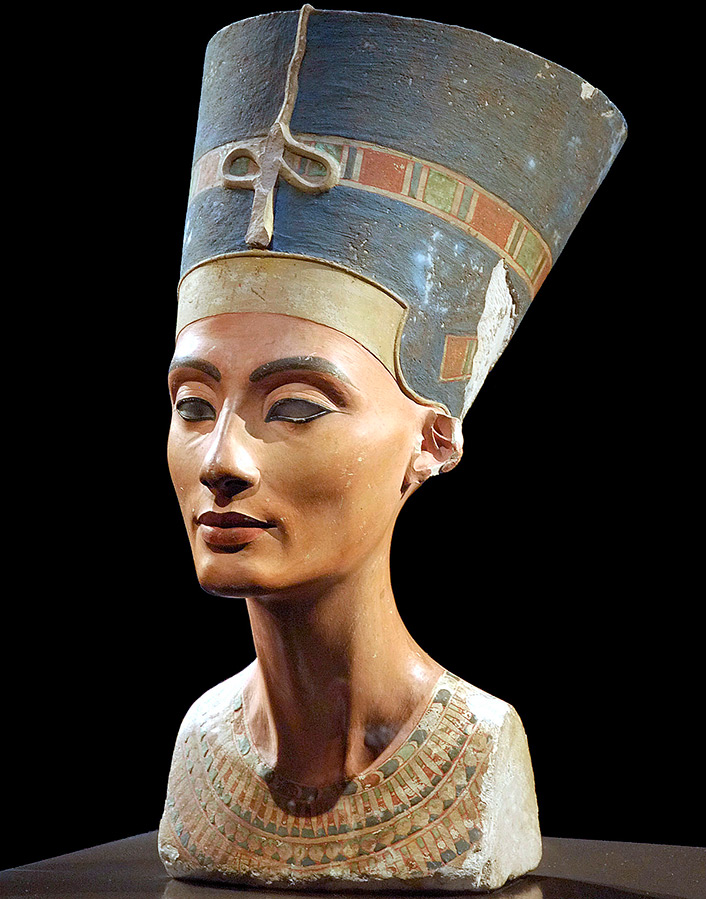
Bust of Nefertiti, cylindrical crown
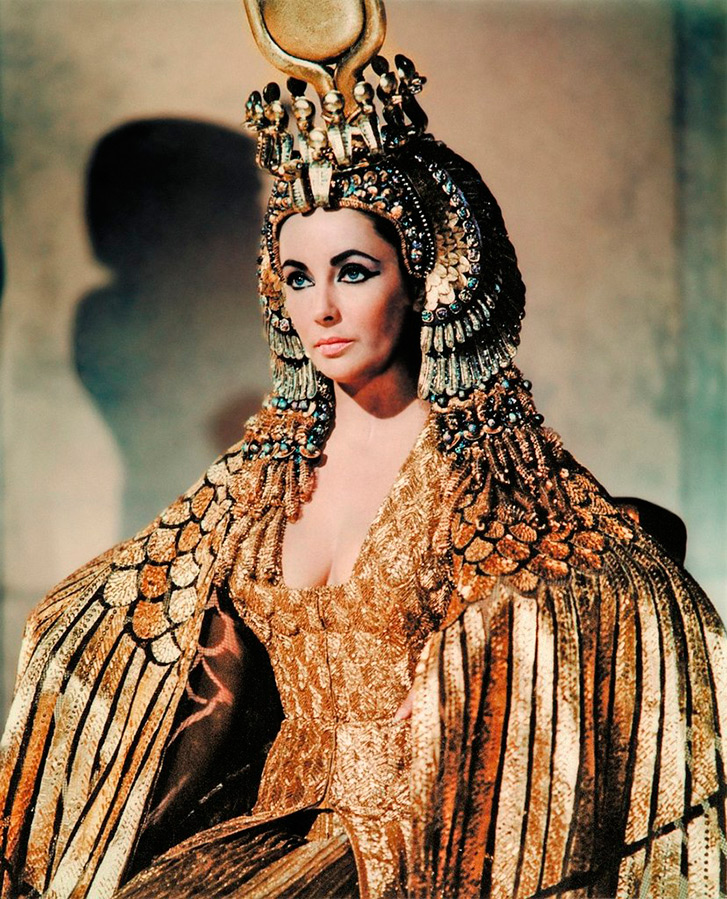
Cleopatra (as Cleopatra Elizabeth Taylor)
The crown on the sides is framed in the form of feathers of a bird of a falcon
During the New Kingdom period, changes take place in the male costume. Sushi is replacing the shenti. Suskh consisted of two parts - kalaziris, borrowed from a woman's wardrobe, and sindon, a large piece of fabric that was wrapped around the hips.
Sindong replaced the shenti. As for the shenti itself, it became at this time the ritual clothing worn by the pharaohs. The pharaohs tied the shenti over the sindon, which in turn was worn on the kalaziris.
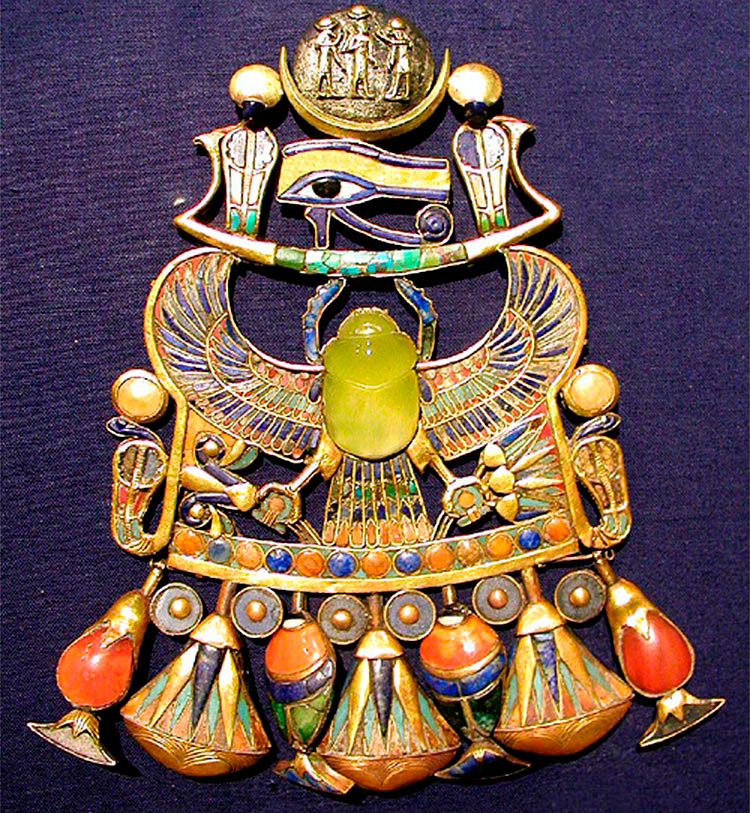
Tutankhamun's breast pectoral "The Rock of God" (1300s BC) is kept in the Cairo Museum
The scarab on this jewelry is made of an unusual material - the so-called Libyan glass. This material is found only in the Libyan desert. According to one version, it arose from a powerful lightning strike into the sand, which melted. There are more fantastic versions, adherents of which believe that Libyan glass is a material of alien origin.
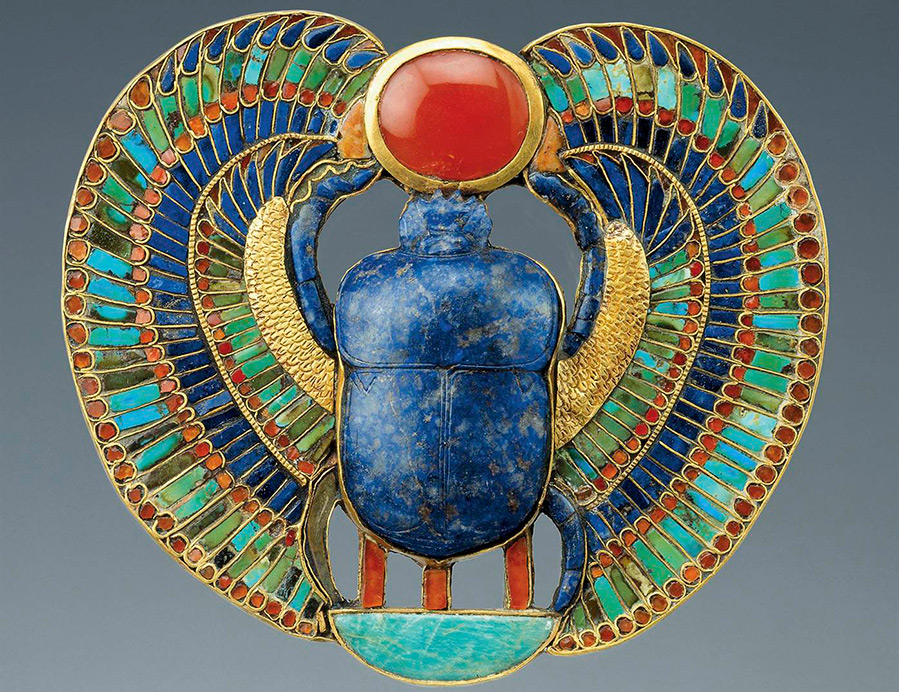
Chest piece found in the tomb of Tutankhamun
The final touch to the costume of the ancient Egyptians was always makeup - and men and women always let their eyes down, since the Egyptians believed that evil spirits could penetrate through the eyes and take possession of a person. Also, Egyptians painted their lips, blushed cheeks, could tint their hands and feet with orange paint, and painted their nails with henna.
The Egyptians also knew aromatic oils, various recipes for healing and rejuvenating ointments, as well as face masks. Famous for her love of cosmetics and Cleopatra, who even wrote a whole cosmetic guide - "About medicines for the face."
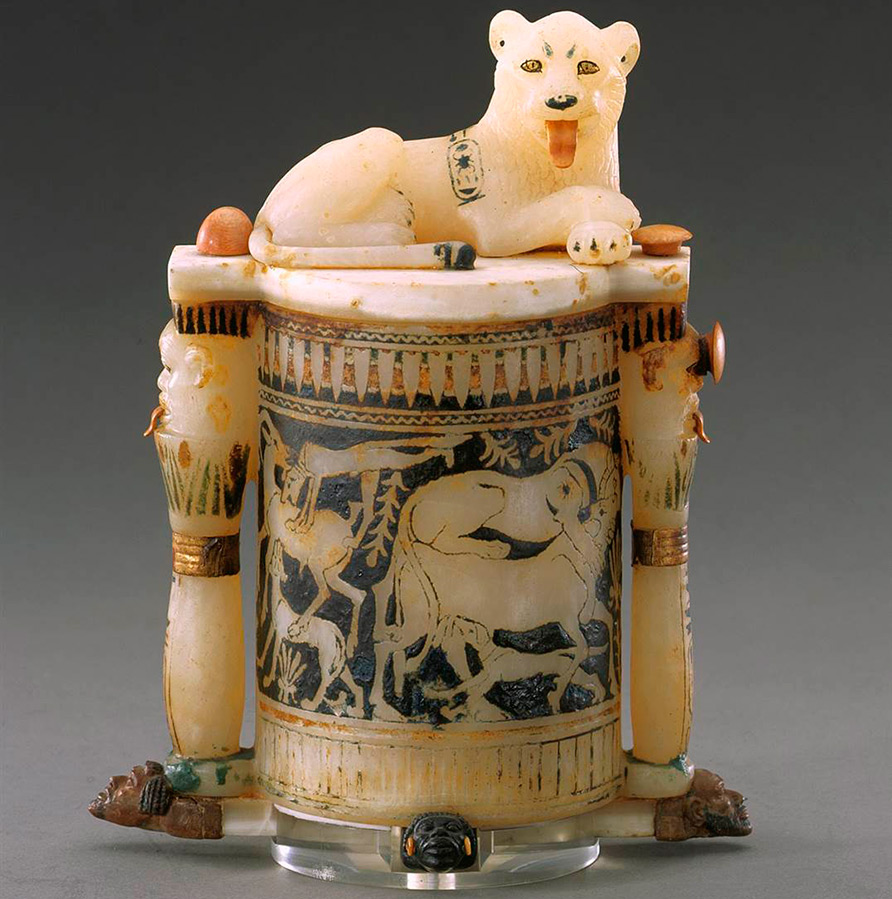
Cosmetic container
Material - calcite, gold, ivory.
On the lid is an image of a lion, which most likely was a symbol of the pharaoh, while the images of the four main enemies of Egypt are presented in the form of heads at the base.
Comments and Reviews
Add a comment
Rating news
Shades of clothing that make women look younger
What shades of hair make women younger: rules and photos
Funny wedding dresses - photos and ideas
12 most expensive down jackets for the winter
How to look 25 at 40: tips from supermodels
Beautiful schoolgirls
Anti-aging haircuts and hairstyles for women
Fashionable skirts for autumn and winter
Fashionable women's trousers for the cold season
Fashionable and stylish sandals for summer 2024
Spring-summer 2024
 Fashionable dresses and tops with thin spaghetti straps
Fashionable dresses and tops with thin spaghetti straps
 Bandana tops: how to wear stylishly and beautifully
Bandana tops: how to wear stylishly and beautifully
 How to put together the perfect men's wardrobe for the summer
How to put together the perfect men's wardrobe for the summer
 Trendy shorts for spring-summer 2024
Trendy shorts for spring-summer 2024
 Fashionable skirts for spring-summer 2024: a guide to online shopping
Fashionable skirts for spring-summer 2024: a guide to online shopping
 The most fashionable dresses spring-summer 2024: styles and colors
The most fashionable dresses spring-summer 2024: styles and colors
 Fashionable total look 2024: image ideas and trends
Fashionable total look 2024: image ideas and trends
